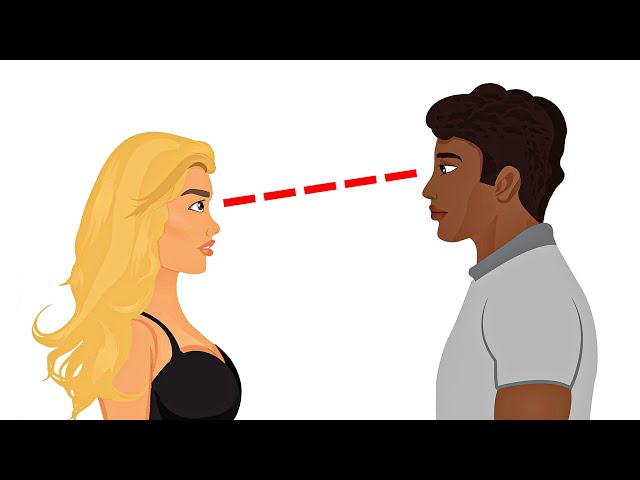Where today we delve into the fascinating world of attraction through 15 psychological insights that reveal why and how we are drawn to certain people. Let’s explore these compelling factors that influence our romantic preferences.
1. Threshold of Attraction
Have you ever been asked, “What’s your type?” You might favor a specific look, but your preferences aren’t static they shift based on your relationship status. When single, your threshold for romantic attraction is low and broad, meaning you’re open to a wide range of people as you explore what might make you happy. However, once in a relationship, this threshold rises significantly. With a partner already by your side, your attraction to others diminishes, though it never completely disappears. Even in long-term relationships, you might still find others appealing, proving that attraction is a dynamic and complex phenomenon.
2. Attraction Control
While some are naturally blessed with attractive features, the most impactful aspects of attraction are within your control. You can’t alter your height or facial structure, but you can influence your health, grooming, and wardrobe. Attractive people vary greatly in appearance, yet they share common traits like good style and fitness. If you feel unattractive, don’t chalk it up to genetics your appearance is something you can shape and enhance.
3. Emotional Rapport
Ever notice a couple with undeniable chemistry and wonder how they achieved it? Chemistry isn’t magic; it stems from rapport a deep, mutual understanding that fosters connection. Often discussed in business, rapport is even more critical in romance. Watch a strong couple interact, and you’ll see layers of communication: one on the surface and another beneath. To build chemistry, engage in genuine conversation, share jokes, and connect on a deeper level. This is where true attraction flourishes.
4. Facial Similarity
You might be drawn to people who mirror your own qualities, whether it’s a similar sense of fashion or physical features like hair color. It’s not uncommon for couples to resemble each other. This happens because you’re accustomed to your own features, seeing them daily in the mirror. Your perception of attractiveness is often a reflection of yourself, so don’t be surprised if you and your partner share similar characteristics.
5. Smile Frequency
How often do you smile? According to the American Psychological Association, women who smile frequently are perceived as more attractive. Positivity and confidence, conveyed through a genuine smile, make women more desirable to men. Interestingly, the reverse is true for men: women often find men who smile less those with a more reserved or brooding demeanor more attractive. The key takeaway? Your facial expressions reveal your personality and attitude, influencing how others see you.
6. The Hair Limit
s facial hair attractive? Studies show that men with stubble are generally rated as more attractive than those who are clean-shaven. However, there’s a limit longer, fuller beards tend to be less appealing. If you’re considering facial hair, keep it short and well-groomed for the best results.
7. Bold Communication
Playing hard to get might seem intriguing, but it often pushes potential partners away. The most attractive people communicate boldly and confidently, expressing their interest, needs, and feelings without hesitation. This clarity and self-assurance make them even more appealing.
8. The Hidden Sense
Attraction isn’t just visual it engages all five senses. We’re drawn to someone’s appearance, voice, and even their scent. A partner’s unique smell can evoke powerful emotions, from comfort to desire. To boost your attractiveness, pay attention to your scent and create a distinctive fragrance that leaves a lasting impression.
9. Influential Media
Our standards of attractiveness are heavily influenced by media, from models and actors to celebrities who shape modern ideals of romance. When meeting strangers, we subconsciously compare them to these figures. However, when choosing a partner, we’re more likely to be drawn to someone uniquely attractive to us, beyond popular trends.
10. The Beauty Bias
Sadly, a beauty bias exists in our culture. Attractive people are often perceived as more intelligent, confident, and successful, leading to more job offers, higher salaries, and better first impressions. This bias stems from our natural tendency to favor those we find appealing, making automatic positive assumptions about them.
11. Attractive Popularity
Sometimes, your attractiveness isn’t just about you. If one person shows interest say, a guy sitting next to his girlfriend he’s more likely to catch others’ attention too. The attention you receive signals attractiveness to others, while being ignored can have the opposite effect.
12. Tonal Changes
When flirting, your voice changes. A 2010 study in the Journal of Non-Verbal Behavior found that both men and women lower their vocal pitch when attracted to someone. Additionally, we’re more drawn to voices of people we find physically attractive, showing how vocal traits influence mutual attraction.
13. Attractive Colors
Some colors are more appealing than others. Red, the symbolic color of love, is rated as the most attractive, especially when worn by women. This bold color sends powerful subliminal messages of romance and attraction. Incorporating red into your wardrobe can instantly enhance your appeal.
14. Musical Atmosphere
Music can transform how attractive you seem. A 2014 study in the Journal of Psychology of Music found that background music strengthens physical and emotional connections between people. Even if the song isn’t perfect, music sets a positive tone, making you more appealing.
15. Familiar Attraction
Familiarity breeds attraction. The more you see and know someone, the closer you feel to them. You might be drawn to someone you encounter regularly, like a staff member at your favorite restaurant. Over time, this familiarity can deepen your attraction, even if they wouldn’t stand out to others.







Leave a Comment